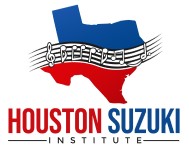About Western Swing Fiddling and Texas-Style Fiddling
by Sherry McKenzie
American fiddle playing began with the early settlers who found that the small viol family of stringed instruments were portable and rugged, easy to travel with to the New World. John Utie, an immigrant from England, settled in Virginia in 1620 and is credited as being the first known fiddler on American soil.
Musicians were as important to communities as doctors, hunters, lawyers and carpenters. As these Irish, Scottish, German, French, Swedish people settled the South and eventually Texas and the West, they brought the finest fiddlers they could find with them. The classical and folk music and dance of their homelands helped people escape their hard life and troubles. The journals of Lewis and Clark contain many references to Frenchman Pierre Cruzatte, whose official duty was as a boatman and fiddler. Also, to George Gibson, who specialized as a hunter, sign-language interpreter and fiddler.
No one knows for sure when the first fiddler came to Texas bringing the fiddle music from their homeland with them. Named for its place of origin and evolution, Texas style fiddling evolved with fiddlers like Benny Thomasson, Major Franklin, Eck Robertson the Solomon family and many others putting their touch on the old tunes. Benny said it best – he took these old tunes and “reworked them” adding variations. Even though these Texas style fiddle pioneers improvised on the basic melody, the improvisations are around the melody. They engineered their versions to be ‘unique’ but still to stay within the lines of being stylistically correct and melody based, trying to compliment the tune.
One of the biggest differences in Texas fiddle style and other old time fiddle styles is the music is not primarily used for dancing. It is still danceable, but often Texas style tunes are slower, allowing more emphasis on melodic development and variation on tunes that have standard parts that repeat.
Texas style is very fiddle-centric, in the sense that almost always, you’ll have just one fiddle in a jam, playing tunes as long as the fiddler chooses, with several rhythm guitar players and maybe a bass player, piano, and/or tenor guitar player in the mix. The backup in Texas fiddling uses different chord voicing to follow the fiddler whereas a lot of eastern fiddle styles use basic chords with more single note bass runs. The fiddler is the only melody player in the group. Breakdowns/hoedowns (reels and hornpipes), waltzes, two-steps, polkas, rags are all commonly heard at Texas style jam sessions and fiddle contests.
The very first recorded example of Country Music is the unaccompanied fiddle tune ‘Sallie Gooden’ played by Eck Robertson, a Texas fiddle player. His sophisticated style of fiddling transcended the typical old-time styles of the day – he was highly accomplished, playing parts in second and third position with technique that was more common with classical music than old-time fiddling. He entertained at silent movie theaters and fiddle contests across Texas and the Southwest. Together with retired confederate soldier and Texas fiddler Henry Gilliland, he travelled to New York City in 1922 to audition for the Victor Talking Machine Company. They were quickly hired to record a total of ten tunes in that visit including – ‘Sallie Gooden’, ‘Arkansas Traveller’, ‘Turkey in the Straw’ and Ragtime Annie’.
Western swing is a difficult musical genre to define. It contains elements from many musical styles – pop, blues, jazz, Dixieland, traditional folk and fiddle, ragtime, and occasionally classical. Western swing is ballroom dance music with a Western flair. It is played primarily on stringed instruments however horns are used in larger Western swing bands.
Western swing was born in Texas in the 1930’s with the formation of a band called the Light Crust Doughboys, which later split into two other bands; Milton Brown and his Musical Brownies, and Bob Wills and his Texas Playboys. The starting point for the genre was the “ranch dance” style of country music based around fiddle and guitar duets, playing old songs and instrumentals such as “Liberty”, “Stone’s Rag”, “The Girl I left Behind Me” and “Red River Valley”. In an attempt to broaden the appeal of the music to the widest possible audience, Milton Brown and Bob Wills began to incorporate elements of swing jazz, which was at the height of sophistication in popular music, and to add more and more instruments. Drums, twin fiddles, the newly invented electric steel guitar, and a brass section were all part of the mix. By the time Wills made his first recordings for Brunswick in 1935, they were a 14-piece band. Wills was himself a breakdown fiddle player in a very traditional Texas style, but he hired other fiddlers such as Jesse Ashlock and Joe Holley, who could play hot “take off” solos in the jazz style of Joe Venuti and Stephane Grappelli. The Western swing bands created a big sound tightly arranged, but with a lot of improvisation. It was loud, swinging music aimed primarily at dancers. In the mid 1940’s Bob Wills was at the height of his fame, performing to audiences in the thousands who would come to dance to his music. During this time there was a craze for western movies, so he and his band moved to California where they appeared in many of them. One of Wills’ songs, “San Antonio Rose”, sold well over a million copies. Western swing music was recognized as the Official State Music of Texas in 2011.
